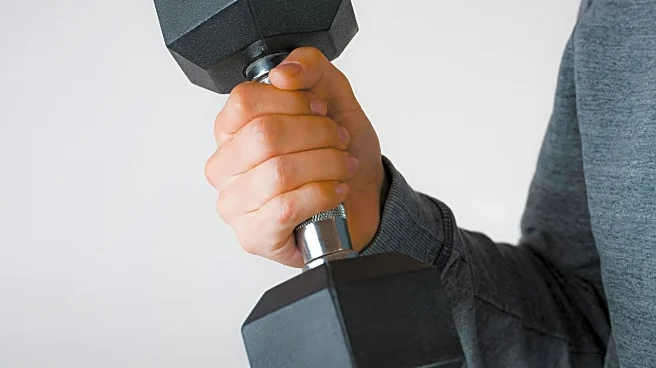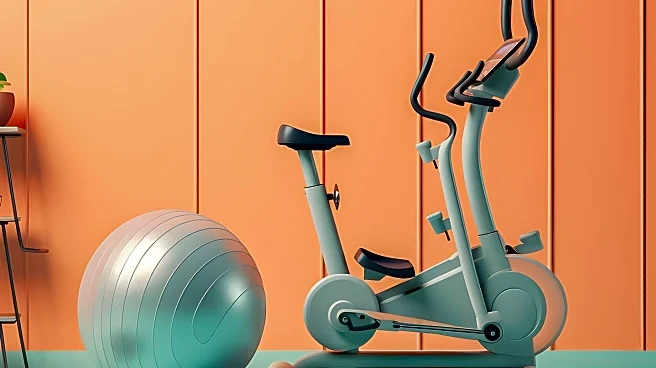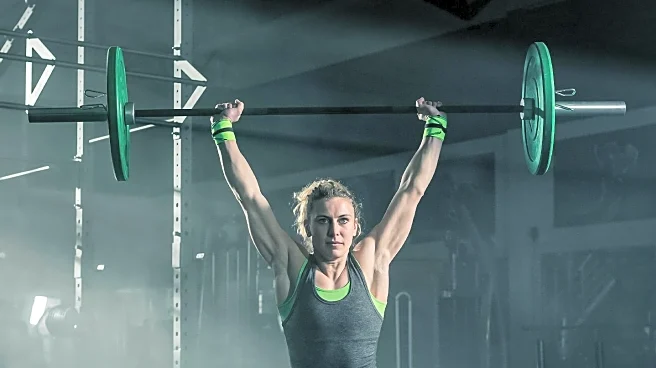What's Happening?
The 'duck walk' exercise is gaining attention as an effective lower-body strength move. It targets multiple muscle groups, including quads, glutes, hamstrings, hip flexors, calves, and the core. Personal
trainer Sabrina Pace-Humphreys highlights its benefits for runners, particularly in building strength for uphill sections. The exercise involves maintaining a deep squat position while taking small steps forward, focusing on stability and engagement rather than speed. Variations include using resistance bands or performing backward duck walks to increase difficulty.
Why It's Important?
The duck walk exercise offers a simple yet effective way to improve lower body strength and stability, which are crucial for various physical activities, including running. Its growing popularity reflects a shift towards functional fitness routines that can be performed outside traditional gym settings. This trend may encourage more individuals to incorporate strength training into their fitness regimes, promoting overall health and injury prevention. The exercise's accessibility makes it appealing to a wide range of fitness enthusiasts, from beginners to advanced athletes.
What's Next?
As the duck walk exercise gains traction, fitness professionals may develop new variations and incorporate it into broader workout programs. This could lead to increased visibility in fitness classes and online platforms, further popularizing the move. The focus on functional exercises may drive innovation in fitness equipment designed to enhance these movements, offering consumers more options for home workouts.
Beyond the Headlines
The emphasis on functional fitness exercises like the duck walk highlights a cultural shift towards holistic health and wellness. This approach prioritizes movements that improve everyday physical capabilities, potentially reducing the risk of injury and enhancing quality of life. As more people adopt these exercises, there may be a broader societal impact on health outcomes and fitness industry trends.











